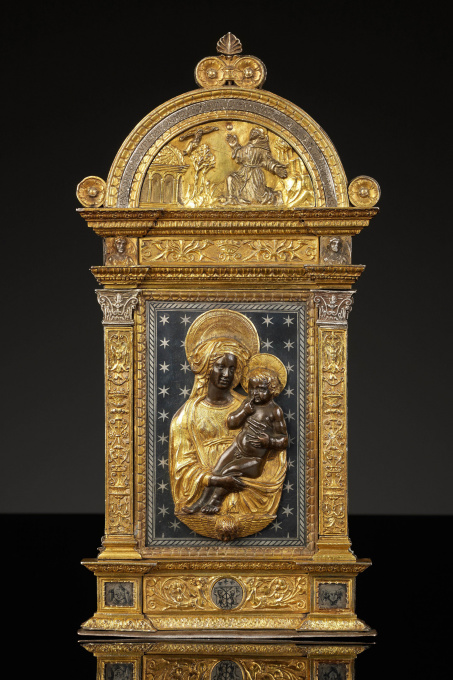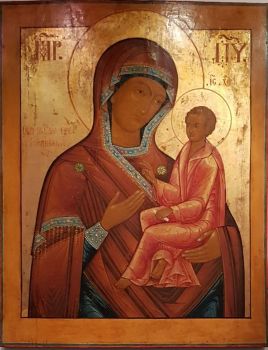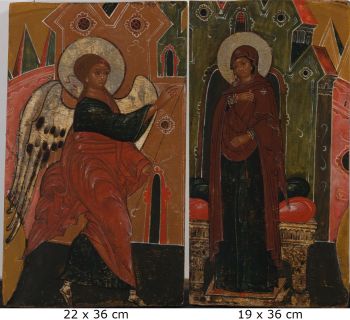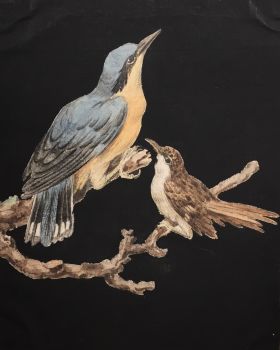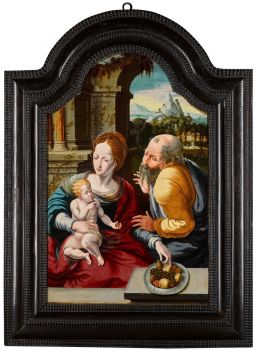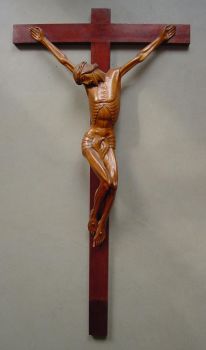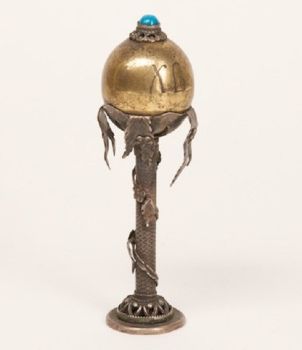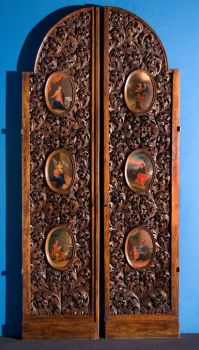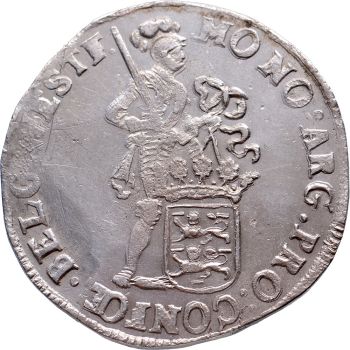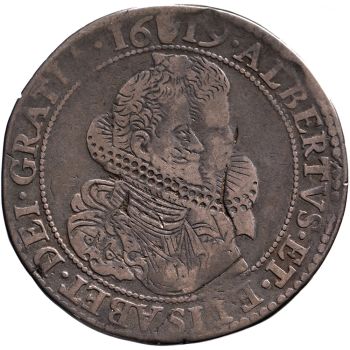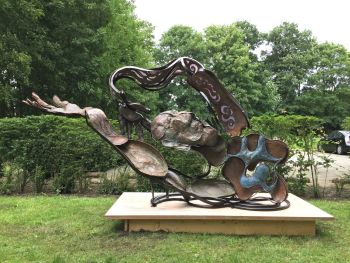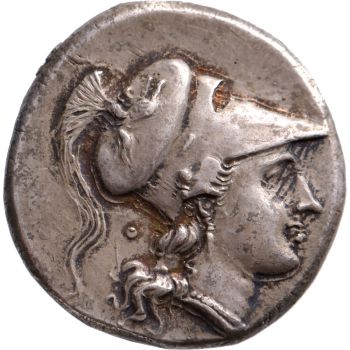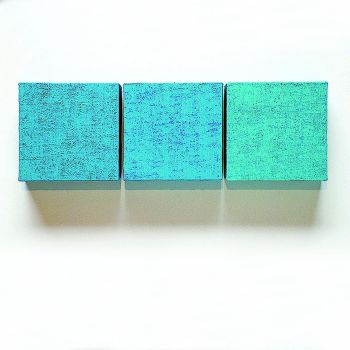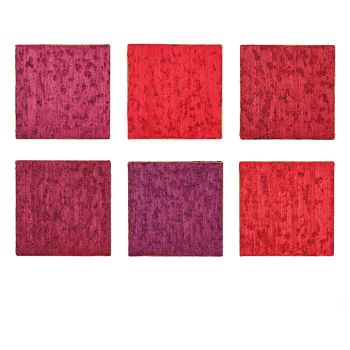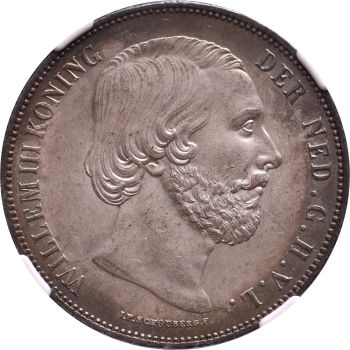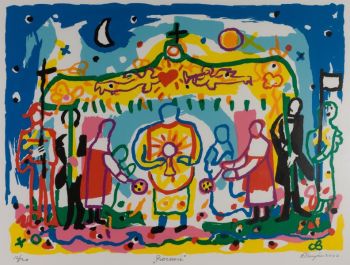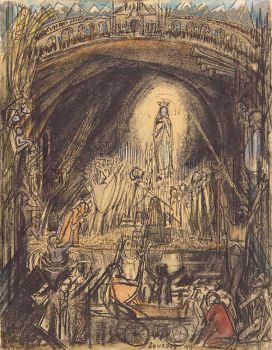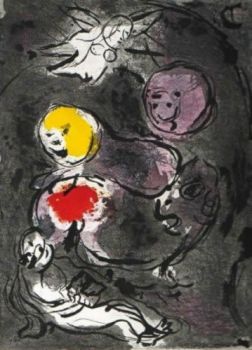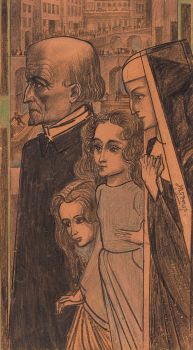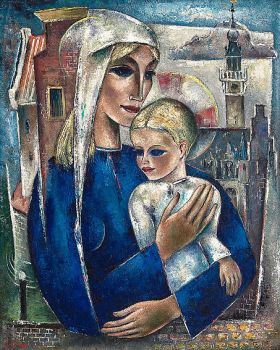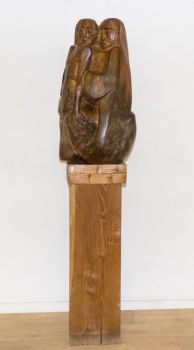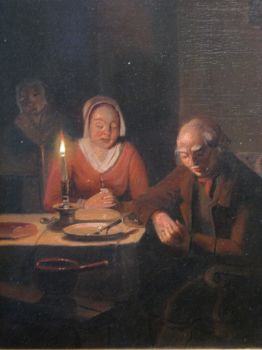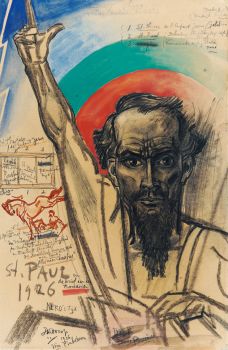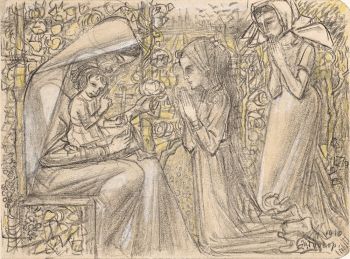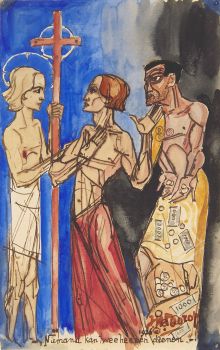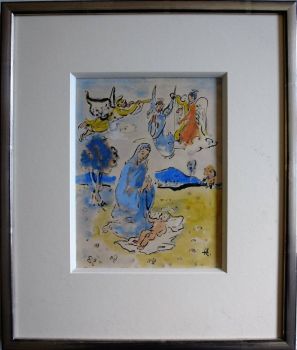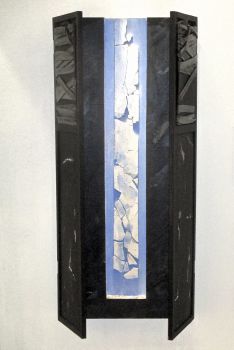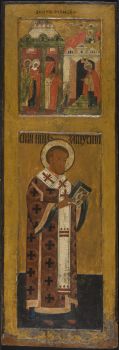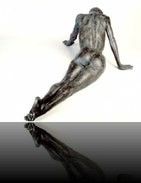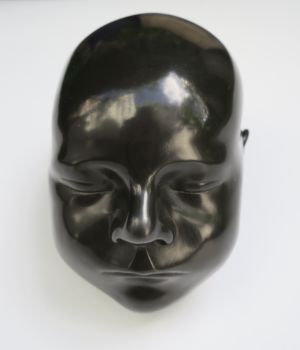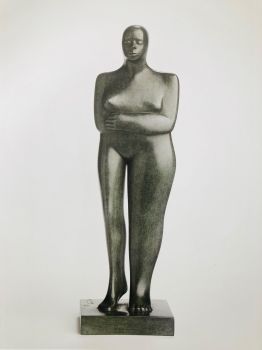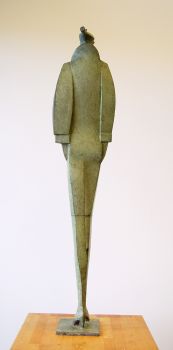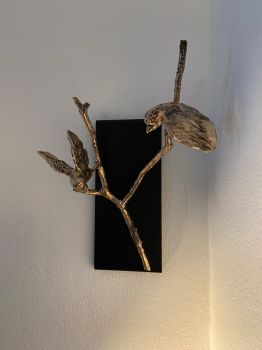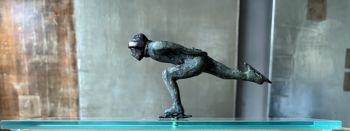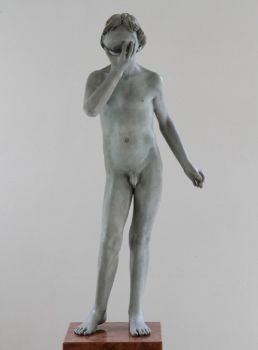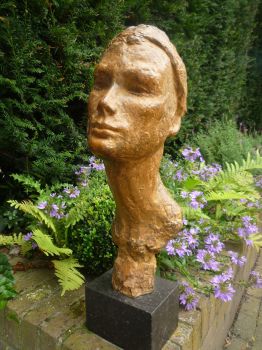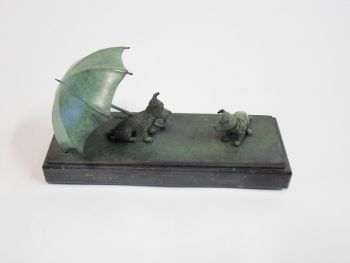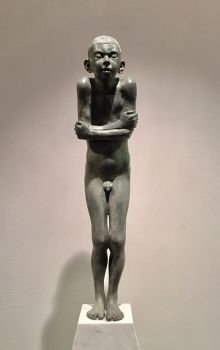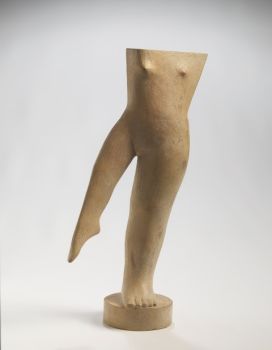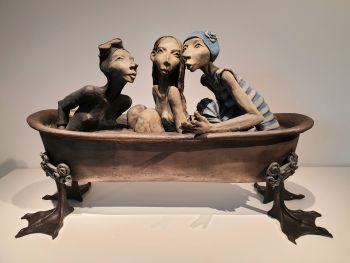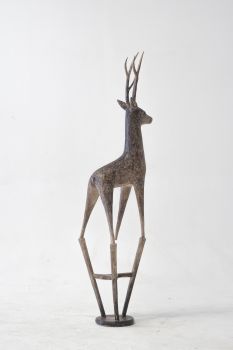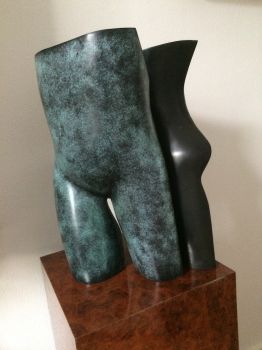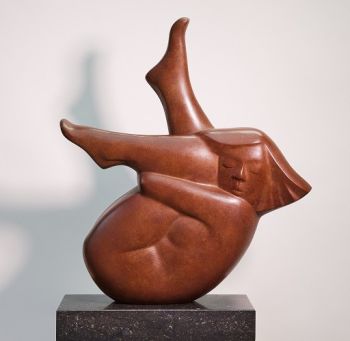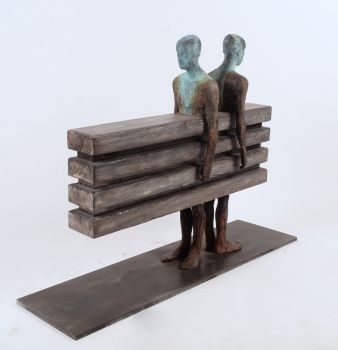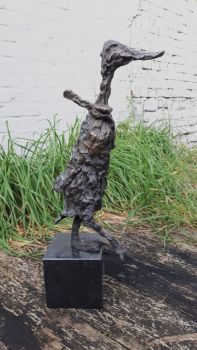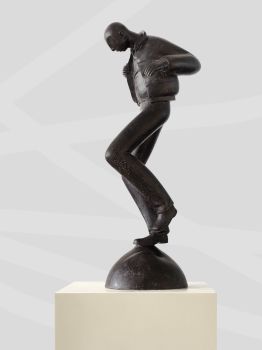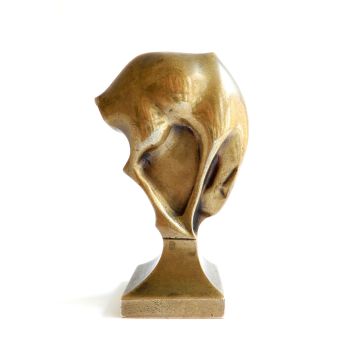A Remarkable Florentine Pax late 15th
Onbekende Kunstenaar
BronsGoudMetaalZilverVerguld
28 ⨯ 13 cm
Momenteel niet beschikbaar via Gallerease
- Over kunstwerkA gilt silver and niello pax frame and lunette of St. Francis receiving the Stigmata, anonymous Florentine goldsmith, 1518; and a partially gilt copper applique of the Virgin, Child and a winged-putto-head, ca. 1445-50, attributed to Maso di Bartolomeo or his circle (after designs by Luca Della Robbia)
A gold gilt silver and niello pax dated 1518 featuring a copper applique of the Virgin, Child and a wingedputto-head, ca. 1445-50, attributed here to Maso di Bartolomeo or his circle (after designs attributed to Luca Della Robbia). The maker of the present pax was a master goldsmith active in Florence during the first quarter of the 16th century. The architectural style of the pax descends from the small gilt-wood tabernacle frames made in late 15th century Florence like those produced by the workshop(s) of Giuliano (1432-90) and Benedetto da Maiano (1442-97). The present frame is remarkable in its construction. It is comprised of at least twenty-five separate pieces, masterfully integrated to produce a seamless finished work. Its maker leaves only nine expertly blended rivets exposed on the obverse and its assembly is equal to the complex facture of other important pax commissions of its time. The majority of the pax frame is cast in silver with gold gilding applied to its obverse using a mercury amalgam. Some surface areas are rubbed due to wear and leave an exposed tarnished silver surface that gives the illusion of exposed bronze beneath the gilding. The reverse backplate and handle of the pax are silver, also heavily tarnished (Fig. 02). The reverse features a dedicatory inscription above the handle: F • K • F • F (made for [Fieri Fecit] “F K”). The base of the reverse is inscribed with the date: MD/XVIII (1518). The pax handle features an engraved religious emblem possibly indicating an owner, church, treasury mark or religious order.
An early context for the use of the Virgin-Child applique is found on two paxes: one at the National Gallery of Art (NGA) and another corresponding pax formerly in Berlin. Its frame, flanked by Corinthian columns and topped by a triangular pediment, represents one of the earliest small style of Florentine tabernacle frames distinguished from its earlier Gothic counterparts.
While the NGA and Berlin Virgin-Child examples are casts of good quality, reproducing the round contours of the original model and employing the same gilt features that leave the flesh-tones exposed in bronze, the previously unpublished applique on the present pax surpasses the aforesaid examples in its quality of casting and definition of details. The crispness along the folds of drapery, between the digits of the hands, feet and strands of hair is exemplary. The sculptor’s tool marks on the original wax or clay model appear reproduced in the fresh and lively character of the bronze, not subdued through aftercasting. It’s reasonable to suggest the present cast could be the prototype from which all other casts descend. The steadfast dependence on the direct casting method employed for bronzes in Florence during the 15th century increases this possibility. - Over kunstenaar
Het kan voorkomen dat een kunstenaar of maker onbekend is.
Voor sommige werken is het niet te bepalen door wie het gemaakt is of dat het is gemaakt door (een groep) ambachtslieden. Voorbeelden zijn beelden uit de Oudheid, meubels, spiegels of handtekeningen die vaak niet duidelijk of leesbaar zijn. Maar ook sommige werken zijn helemaal niet gesigneerd.
Ook kunt u de volgende beschrijving vinden:
•"Toegeschreven aan …." waarschijnlijk een werk van de kunstenaar maar niet zeker of gedeeltelijk
•“Atelier van ….” of werkplaats van” een werk uitgevoerd in het atelier of atelier van de kunstenaar, eventueel onder zijn toezicht
•“Cirkel van ….” een werk uit de periode van de kunstenaar die zijn invloed laat zien, nauw verbonden met de kunstenaar maar niet noodzakelijkerwijs zijn leerling
•“Stijl van ….” of “Volger van ….” een werk uitgevoerd in de stijl van de kunstenaar, maar niet noodzakelijk door een leerling; kan eigentijds of bijna eigentijds zijn
•“Wijze van ….” een werk in de stijl van de kunstenaar maar van latere datum
•"Na …." een kopie (van welke datum dan ook) van een werk van de kunstenaar
•“Getekend…”, “Gedateerd….” of “Ingeschreven” dan is het werk gesigneerd/ gedateerd/ ingeschreven door de kunstenaar. De toevoeging van een vraagteken duidt op een element van twijfel
•"Met handtekening ...", "Met datum ...", "Met opschrift..." of “Draagt signatuur/datum/opschrift” dan is de handtekening/datum/opschrift toegevoegd door iemand anders dan de kunstenaar
Artwork details
Related artworks
- 1 - 4 / 12
- 1 - 3 / 3
Onbekende Kunstenaar
Silver Russian Presentation Easter Egg1880 - 1899
Prijs op aanvraagH.W.C. Dullaert Art & Antiques Dealer
Samuel Dejong
Anatomia Blue Heritage, Hercules Open2017 - 2019
Prijs op aanvraagVilla del Arte Galleries
 Gecureerd door
Gecureerd doorGallerease Magazine
Rene Rietmeyer
"USA South Florida January 2006"2006
Prijs op aanvraagEuropean Cultural Centre Collection
1 - 4 / 24 Gecureerd door
Gecureerd doorGallerease Magazine
1 - 4 / 24- 1 - 4 / 24

